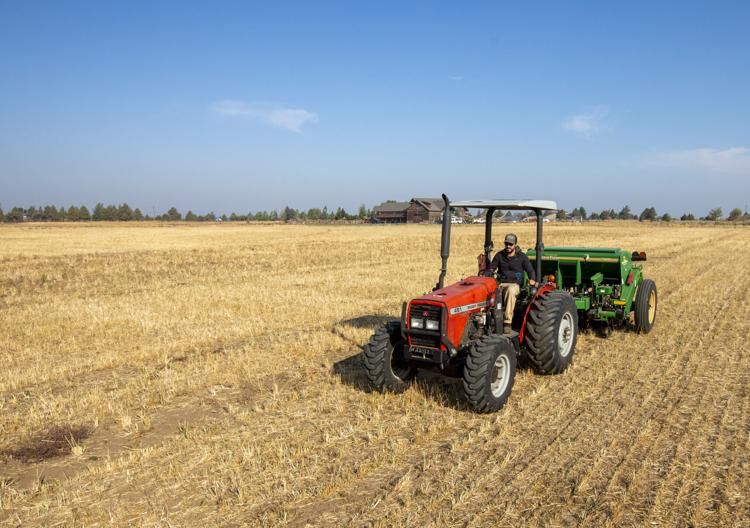Cover crops catch on among farmers, survey finds
Published 5:00 am Saturday, August 12, 2023

- A farmer plants a cover crop in Central Oregon. A new survey found that cover crops are gaining in popularity among farmers for a variety of reasons.
SALEM — Some farmers have received incentives to use cover crops for a number of years, but the vast majority aren’t doing it for the money.
Trending
That’s one key finding in the latest National Cover Crop Survey.
There’s been lots of discussion as of late about cover crop incentives, whether it’s climate-smart programs, boosting money for the Natural Resources Conservation Service or even in the private sector, said Rob Meyer, national liaison on cover crops and soil health for USDA’s Sustainable Agriculture Research and Education (SARE) program.
“The big question I hear a lot is once that incentive payment goes away does the farmer stick with cover crops, and this is a really strong answer on that — 67% said definitely yes, they’re going to stick with cover crops after those payments end,” he said during a press briefing on the results of the survey.
Trending
Almost 23% of survey respondents said they probably would continue to use cover crops without an incentive payment he said.
“So we’re looking at about 90% saying they’re either definitely or probably going to stick with cover crops after those incentive payments end,” he said.
This was the first time the survey posed that question, and it is a common question in policy circles, he said.
On the flip side, only about 3% of respondents said they’d definitely or probably stop using cover crops after the incentives end, he said.
Primary goals
The survey provides some insights into why farmers would continue using cover crops even without an incentive payment.
In gauging farmers’ primary goals for using cover crops, the survey tallied the following top responses from users.
• 95% — improve soil health.
• 91% — soil organic matter or carbon sequestration.
• 82% — improve water infiltration.
• 81% — reduce erosion.
• 80% — improve weed management.
In contrast, only 16% of respondents stated a primary goal was to receive an incentive payment.
“Very few are identifying that receiving an incentive payment is the primary goal, however, we certainly know from other surveys that those incentives, especially for new cover crop users, does play a critical role in their adoption and decision,” said Ryan Heiniger, executive director of Conservation Technology Information Center.
Rented land
The survey also busted the long-held myth that land ownership is an issue in the use of cover crops. The survey found 14.2% of cover crop users don’t own any of the land they farm, compared with 9.6% of non-users that don’t own the land they farm. In addition, there was only a 1% difference between cover crop users and non-users who own 100% of the land they farm.
In other highlights, the survey found farmers with 10 years or more of experience with cover crops had a yield gain of about 6.3% in both soybeans and corn.
“So they’ve really become comfortable with using cover crops and know how to optimize their management,” Meyers said.
Farmers who were pretty new to cover crops, with two years or less of cover crop experience had a yield gain of just over 3% in soybeans. Corn yields were not statistically different between cover crop users and non-users, he said.
Weed control is always a topic of interest, and the survey found 73% of farmers said weed control was better after the cover crops and only 2% thought it was worse, he said.
Asking more than 100 questions, the survey report covers numerous aspects of cover crop usage and outcomes.
Nearly 800 farmers participated in the 2022-2023 survey, providing perspectives from across the country. Of those 80% were cover crop users. The goal of the survey was to delve into the practices, perceptions and motivations surrounding cover crops.
Western Innovator: Organic farm tests regenerative ag
Idaho FFA Foundation: New leader aims to build on strong momentum









